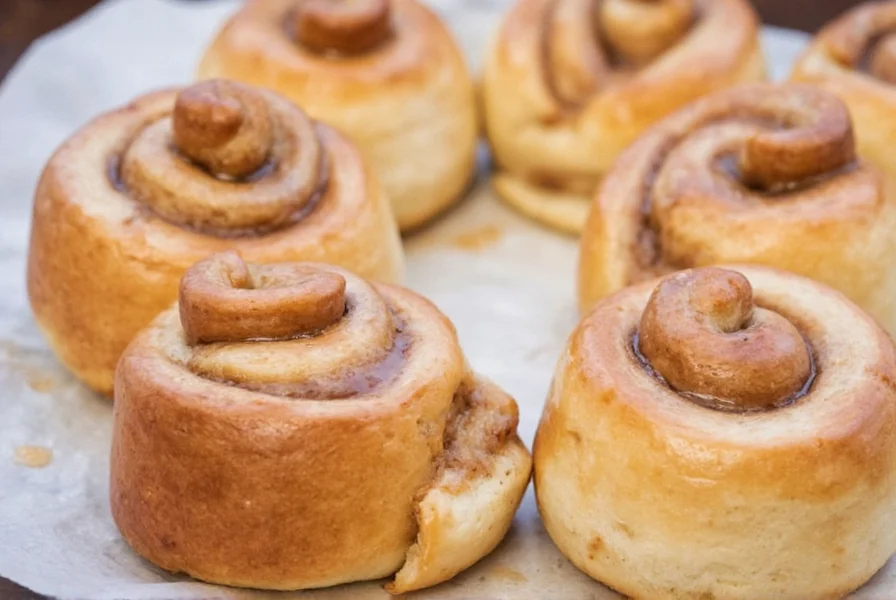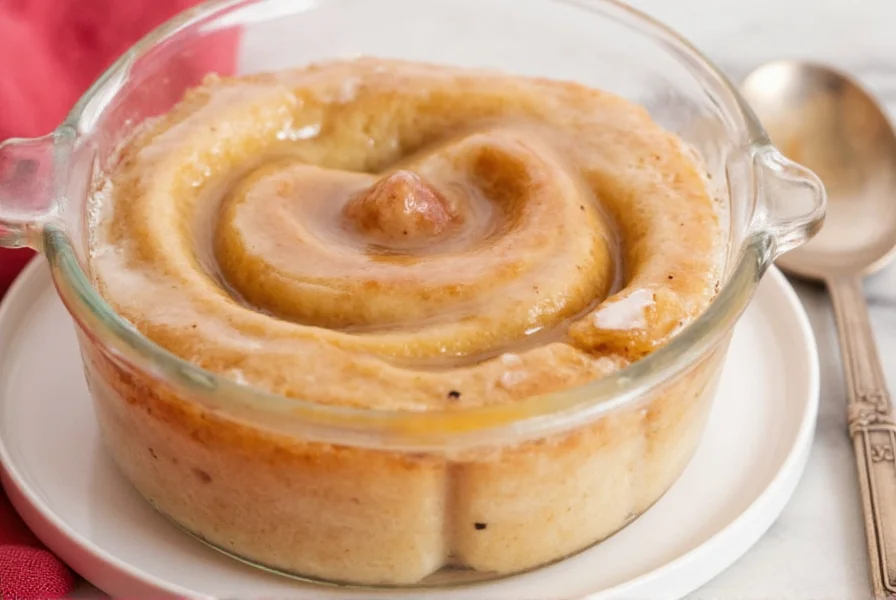Perfect cinnamon bun glaze transforms good pastries into extraordinary treats. While seemingly simple, the right glaze balances sweetness, texture, and temperature for maximum impact. Many home bakers struggle with glaze that's either too runny or stubbornly thick, but understanding the science behind this finishing touch solves most problems.
The Essential Components of Perfect Cinnamon Bun Glaze
Creating exceptional glaze requires understanding each ingredient's role. Powdered sugar (confectioners' sugar) forms the base, with its cornstarch content preventing crystallization. The liquid component—typically milk, cream, or half-and-half—controls consistency. Whole dairy products yield richer results than skim alternatives. Pure vanilla extract adds depth beyond basic sweetness, while melted butter contributes subtle richness without greasiness.
Professional bakers emphasize that ingredient temperature matters significantly. Cold dairy straight from the refrigerator causes powdered sugar to seize, creating lumps that won't dissolve. Allow all components to reach room temperature before mixing for smoothest results. The ideal glaze consistency resembles heavy cream—thick enough to coat the back of a spoon but thin enough to flow gradually.
Classic Cinnamon Bun Glaze Recipe
This reliable formula works across most kitchen environments. Adjust liquid quantities based on your humidity level—drier climates may require slightly more liquid.
| Ingredient | Measurement | Notes |
|---|---|---|
| Powdered sugar | 2 cups (240g) | Sifted to prevent lumps |
| Heavy cream or whole milk | 2-3 tbsp | Room temperature |
| Unsalted butter | 1 tbsp, melted | Cool slightly before adding |
| Vanilla extract | 1 tsp | Pure extract preferred |
| Salt | Pinch | Enhances flavor complexity |
Application Techniques for Professional Results
Timing proves crucial for perfect glaze absorption. Apply when buns reach 110-120°F—too hot and the glaze melts into the pastry; too cool and it sits on top without penetrating. Use a pastry brush for controlled application or drizzle with a spoon for artisanal presentation.
For bakery-style results, let glaze set for 15-20 minutes before serving. This allows surface drying while maintaining that desirable sticky texture underneath. Humid environments may require additional setting time—test one bun first before glazing your entire batch.

Troubleshooting Common Glaze Problems
Problem: Glaze too runny
Solution: Add powdered sugar one tablespoon at a time until desired thickness. Humid conditions often require up to 1/4 cup additional sugar.
Problem: Glaze too thick
Solution: Incorporate liquid incrementally—a few drops at a time. Whole milk works better than water for thinning, as it maintains richness.
Problem: Glaze sets too hard
Solution: Increase liquid ratio slightly or add 1/2 teaspoon light corn syrup to prevent over-hardening.
Problem: Glaze separates
Solution: Ensure butter is properly melted and cooled before mixing. Re-whisk vigorously or add 1/2 teaspoon additional liquid to re-emulsify.
Creative Variations for Specialized Diets
Dietary restrictions needn't compromise glaze quality. These adaptations maintain texture and flavor while accommodating special needs:
- Vegan cinnamon roll icing: Substitute coconut cream for dairy and use vegan butter alternative
- Gluten-free glaze: Standard powdered sugar is naturally gluten-free (verify brand if highly sensitive)
- Lower sugar option: Replace 1/2 cup powdered sugar with erythritol-based confectioners blend
- Citrus-infused glaze: Add 1 teaspoon lemon or orange zest plus 1/2 teaspoon juice
Advanced Flavor Enhancements
Elevate your basic cinnamon bun topping with these professional techniques:
Infuse your cream with complementary flavors by heating with citrus zest, cinnamon sticks, or vanilla bean, then cooling before use. A small amount of espresso powder (1/4 teaspoon) deepens flavor complexity without making the glaze taste coffee-like. For holiday baking, add 1/8 teaspoon almond extract to create that classic bakery aroma.
Consider texture contrasts by sprinkling chopped toasted nuts or crystallized ginger over freshly glazed buns. The crunch provides delightful contrast to the soft pastry and smooth icing.
Storage and Shelf Life Considerations
Glazed cinnamon buns maintain freshness for 2-3 days at room temperature when stored in an airtight container. Avoid refrigeration, which causes condensation that ruins texture. For longer storage, freeze unglazed buns then apply fresh glaze after thawing and reheating.
Leftover glaze keeps for 3-4 days refrigerated in a sealed container. Stir well before reuse, adding a few drops of liquid if separation occurs. Never refreeze previously frozen glaze, as texture deteriorates significantly.











 浙公网安备
33010002000092号
浙公网安备
33010002000092号 浙B2-20120091-4
浙B2-20120091-4